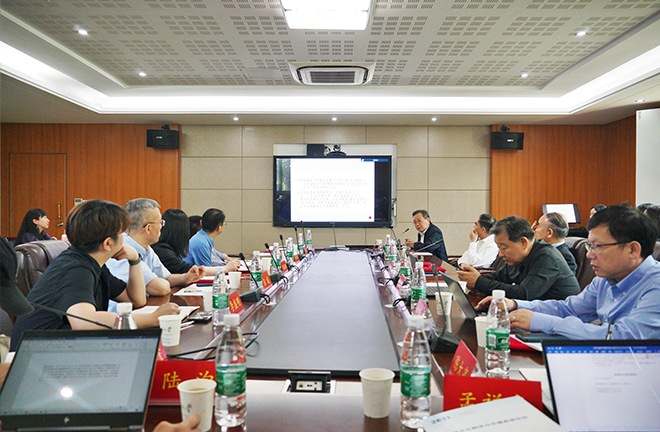Enhancing translation studies to disseminate Chinese culture

A seminar on translation studies to better disseminate Chinese culture in Suzhou, Jiangsu Province, May 29 Photo: Xiang Jiangtao/CSST
Amid the continuous advancement of economic globalization and cultural diversification, translation studies perform an increasingly significant role in social development and cross-cultural communication. The Forum on Chinese Cultural Translation and Dissemination was held in Suzhou, Jiangsu Province, on May 29. Scholars shed light upon opportunities created by profound changes unseen in a century, trying to refine translation strategies which introduce Chinese culture to the outside world.
Translation criticism
Translating Chinese classics is a powerful way to spread Chinese culture to the world, by which fine traditional Chinese culture will contribute new ideas and new value to the prosperity and development of world culture, which will ultimately bring China more equal participation in international dialogues. Xu Jun, a professor at Zhejiang University, called for greater research efforts on translation criticism, literary translation, Chinese academic translation, and translation teaching.
Xu added that against the historical context of the Chinese nation’s great rejuvenation, a new trend has emerged in China-West relations characterized by China’s cultural self-consciousness and cultural export in pursuit of “Chinese culture going global.” However, the field of translation still faces multiple challenges, which demand translation criticism’s supervision, guidance, and normative treatment. The construction of translation critical theory is still in its infancy, with its involvement in translation practice in need of expansion and depth. Translation criticism is still a weak link in translation studies.
Translation paths
Translation has always been a significant way to stimulate language growth. Wang Kefei, a professor from Beijing Foreign Studies University, focused on translation paths and their theoretical constructive significance. Wang called for analysis of actors initiating translation activities, the purposes of these activities, and the effect, since Chinese translation activities abound in resources for researching translation paths. Translation paths should examine each step, from translators to material selection, cognition, strategies, practices, responses, and acceptance, in a joint effort to build translation theories with Chinese characteristics.
China has become increasingly active in the translation of its works, such as the China Book International Project, the China Classics International Project, the Silk Road Book Project, the Chinese Contemporary Literature Translation Project, and the Asian Classics Inter-Translation Project. Meanwhile, the on-demand selection of Chinese works produced by foreign translators and publishers has become increasingly prominent. Active translation and on-demand selections complement each other, forging a more vigorous and vibrant ecology of literary exchange.
Luo Xuanmin, a professor from Guangxi University, unveiled how scholars discovered the source text for Yan Fu’s Meishu Tongquan (literally Interpretation of Fine Arts) is actually William Basil Worsfold’s On the Exercise of Judgment in Literature. This process uncovers the mystery of Yan’s literary and aesthetic thought, and illustrates the importance of textual research and the seriousness of historical data mining.
Through investigating French translator and sinologist Noël Dutrait’s unique translation practice and experience, Liu Yunhong, a professor from Nanjing University, worked on seeking the universal significance that serves Chinese literary translation, exploring possible paths from translators’ research.
Feng Qinghua, a professor with Shanghai International Studies University, discussed inanimate-subject sentences in Chinese-English translation, indicating that such sentence patterns offer valuable first-hand reference for China’s English translation teaching and research.
Diplomatic discourse
Hu Kaibao, a professor from Shanghai International Studies University, looked into the English translation of contemporary Chinese diplomacy’s core terminology and its dissemination in the United States, the United Kingdom, and India, proposing strategies in response to situations and problems facing the external communication of contemporary Chinese diplomatic discourse.
Discourse dissemination methods refer to the way people spread their thoughts and ideas through discourse, covering political discourse, journalistic discourse, academic discourse, and folk discourse, Hu continued. Having their respective advantages, these discourse methods play different roles in externally spreading contemporary Chinese diplomatic discourse. However, the international dissemination of contemporary Chinese diplomatic discourse mainly adopts political discourse and journalistic discourse, and rarely uses academic discourse or folk discourse, let alone a combination of these discourses, leaving great room for improvement.
Hu noted that whether translated terminology is clear and consistent directly relates to the reliability of discourse statements and related theory, and also directly impacts the external communication effects of specific forms of discourse. Only by accurately translating discourse terms for major country diplomacy with Chinese characteristics, and by providing normative translated terms, can we accurately and objectively spread Chinese diplomatic concepts to the international community.
Multi-modality in material and symbolic forms appear more intuitive and vivid, so that it can generate impact in a shorter period of time, yet its explanations are not as profound and comprehensive as textual forms. In contrast, textual forms tend to be more indirect and abstract; while their impact often lags, it is more lasting. As such, it is necessary to leverage different discourse forms to better spread diplomatic discourse to the outside world, Hu concluded.
Edited by YANG LANLAN
